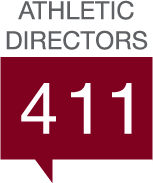The NCAA’s recent decision to eliminate the National Letter of Intent (NLI) marks a historic change in college athletics, significantly impacting recruiting practices for high school and college athletic directors. This change, approved by the NCAA Division I Council, introduces a new financial aid agreement designed to provide the same core benefits as the NLI while offering more flexibility for student-athletes and institutions.
Understanding the NLI
The National Letter of Intent has been a cornerstone of college recruiting since its establishment in 1964. It served as a binding contract between prospective student-athletes and college programs, requiring schools to provide athletic scholarships for at least one academic year. In exchange, student-athletes athletes committed to that school, limiting their ability to talk to other programs.
But as college athletics evolve—especially in light of recent legal developments and ongoing policy reassessments—the need for reform has become clear. The elimination of the NLI is part of broader changes stemming from the House v. NCAA lawsuit, which could allow schools to share substantial financial resources with athletes, fundamentally altering the economics of college sports.
New Recruiting Dynamics
Financial Aid Agreements
With the NLI gone, schools will now use written offers of financial aid, replacing the previous binding nature of the NLI. While this new agreement retains many protections, it streamlines the process considerably. Once an athlete signs this agreement, other schools can’t recruit them—similar to the previous NLI system.
This flexibility opens the door for athletic directors to adopt more dynamic recruitment strategies, particularly for high-profile athletes whose commitments can often change up until the last moment.
Enhanced Athlete Mobility
The removal of the NLI is expected to enhance student-athlete mobility. No longer bound by a single year of commitment, athletes will have more freedom to explore their options. Athletes will no longer be bound by a single year of commitment, allowing them to explore options more freely.
As recent updates have relaxed penalties for transfers—enabling athletes to move without mandatory sit-out periods—the recruiting landscape is changing rapidly. This shift marks the need for athletic directors to build strong relationships with their recruits, as students may be more inclined to explore multiple options.
Changes to the Recruiting Calendar
While the NCAA has yet to finalize a new recruiting calendar, the elimination of the NLI sets the stage for potential changes, particularly for sports like football and basketball. The current early signing period is slated for December 4, 2024, which precedes conference championships. This timing could result in chaotic recruitments spilling into January, as athletes might delay binding commitments until after the season concludes.
This year may be particularly pivotal, as financial considerations are expected to take center stage in discussions. Many recruits will prioritize monetary offers over traditional factors such as program prestige or coaching staff.
Preparing for the Transition
Strategic Adaptations
Athletic directors will need to adjust their recruiting strategies in light of these changes. Here are a few key areas to focus on:
- Establishing Clear Communication: As student-athletes navigate their options more freely, maintaining open lines of communication becomes vital. Directors should emphasize transparency and trust with potential recruits.
- Reevaluating Commitments: The shift towards financial aid agreements necessitates a reevaluation of how commitments are viewed. Athletic directors must foster environments where athletes feel valued, increasing the likelihood of successful recruitment.
- Adapting to New Timelines: With potential changes to the recruiting calendar, athletic directors should stay informed about proposed timelines and adjust their recruitment strategies accordingly.
Monitoring Compliance
As the NCAA transitions away from the NLI, it’s crucial to adhere to the new rules and agreements. Athletic directors must ensure their staff understands the implications of financial aid agreements, including compliance with recruiting communications and aid distribution.
The NCAA’s decision to eliminate the National Letter of Intent signifies a transformative moment in athletics, reshaping the recruiting landscape. For athletic directors, embracing these changes and adapting strategies will be key to navigating this new era successfully. With increased flexibility comes greater responsibility to maintain strong relationships with recruits, ensuring that programs not only attract talent but also cultivate a supportive and engaging environment for student-athletes.




